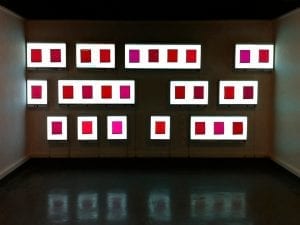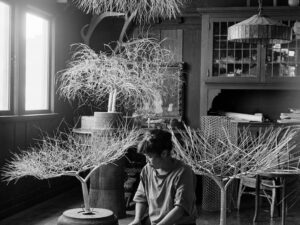Located off the coast of Lanzarote, Europe’s first underwater museum lies in wait beneath the waves. The recently opened Museo Atlántico took two years to complete. On 10 January, a ceremony conducted by local official Pedro San Ginés and British sculptor Jason deCaires took place under the Atlantic Ocean. It was conceived as a place for both preservation and education, constructed from pH-neutral concrete that will, over time, create an artificial reef to facilitate the increase of marine biomass. Though unique to this continent, it is not deCaires’ first excursion into aquatic sculpture, with many of his compositions located in Mexico’s Museo Subacuático de Arte in Cancún, the world’s first entirely submersed gallery.
Highlights include The Human Gyre, consisting of an eerie series of figures arranged in a tangled circle. Many of the compositions feature life-sized models, which seem suspended in their everyday movements on the ocean floor, the dappled light imbuing them with an otherworldly and sublime quality. Furthermore, one of deCaires inquiries into large-scale architecture (Crossing the Rubicon) is presented.
As the museum ages, it will be transformed into a platform for the growth of new ecosystems. This secondary stage in the sculptures’ lifetime define them as more than a striking artefact, they become worlds of growth. Assembled from concrete, each figurine has a carefully chosen surface texture, with rough and smooth finishes catering to different forms of marine life. However, due to the powerful and uncontrollable nature of the sea, the transformation of each cannot be predicted, even with deCaines decade of experience. As with the museum in Cancún, Museo Atlántico serves to draw tourists away from the area’s endangered reefs.
Museo Atlántico is an outstanding achievement, not only because of its unusual nature and pioneering approach, but in the also issues it proposes. Alongside pushing the boundaries of site-specific art and challenging notions of the gallery space, it also fosters discussion surrounding the endangerment of reefs and the urgent need for conservation. Lastly, the sculptures also provide an area for the growth for new ecosystems, encouraging the development of underwater life.
Museo Atlántico, Lanzarote. For more information, visit: http://www.cactlanzarote.com/cact/museo-atlantico/
Find us online @Aestheticamag
Credits
1. Jason deCaires Taylor and CACT Lanzarote. Photo courtesy of Museo Atlántico.





